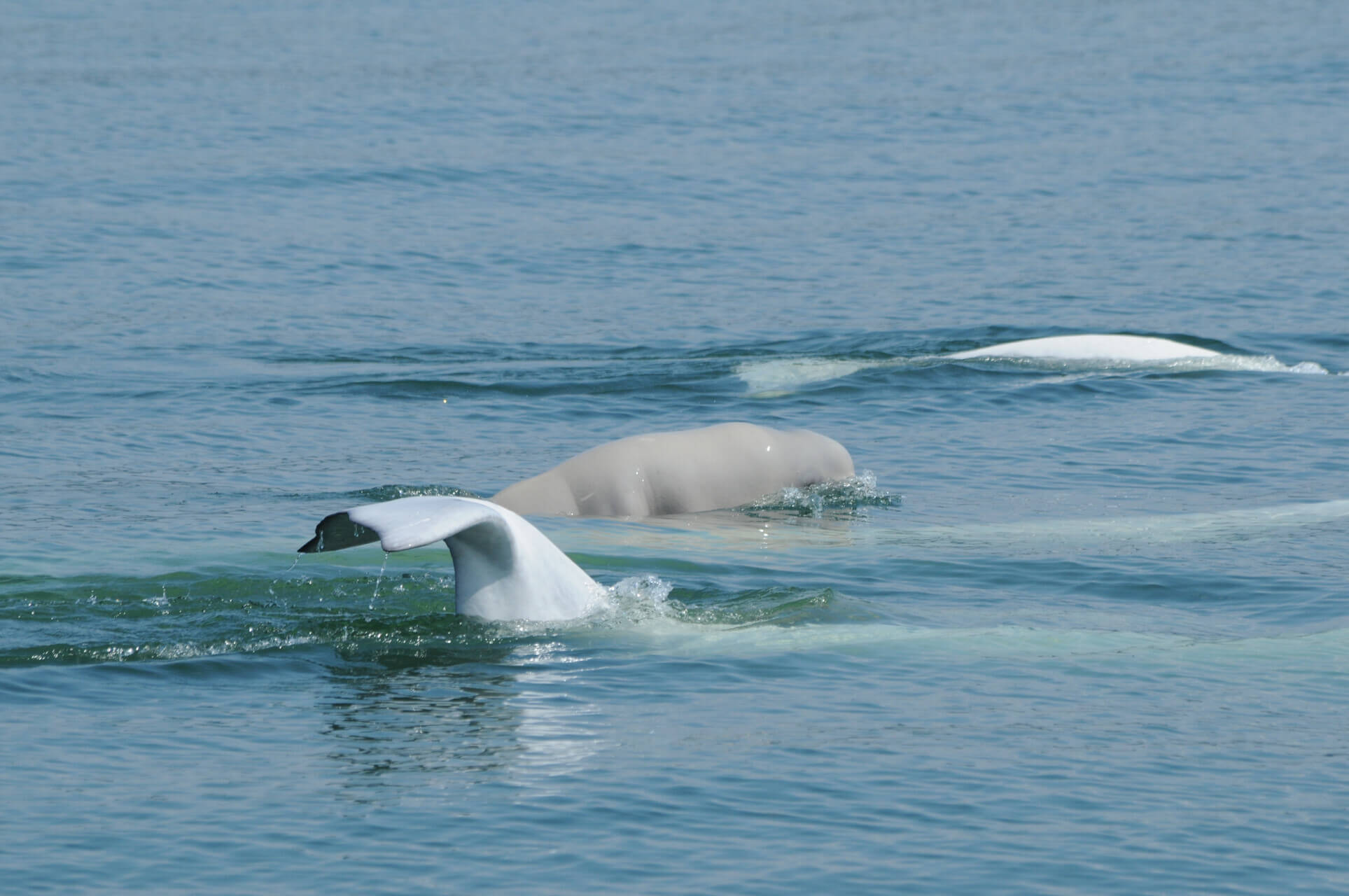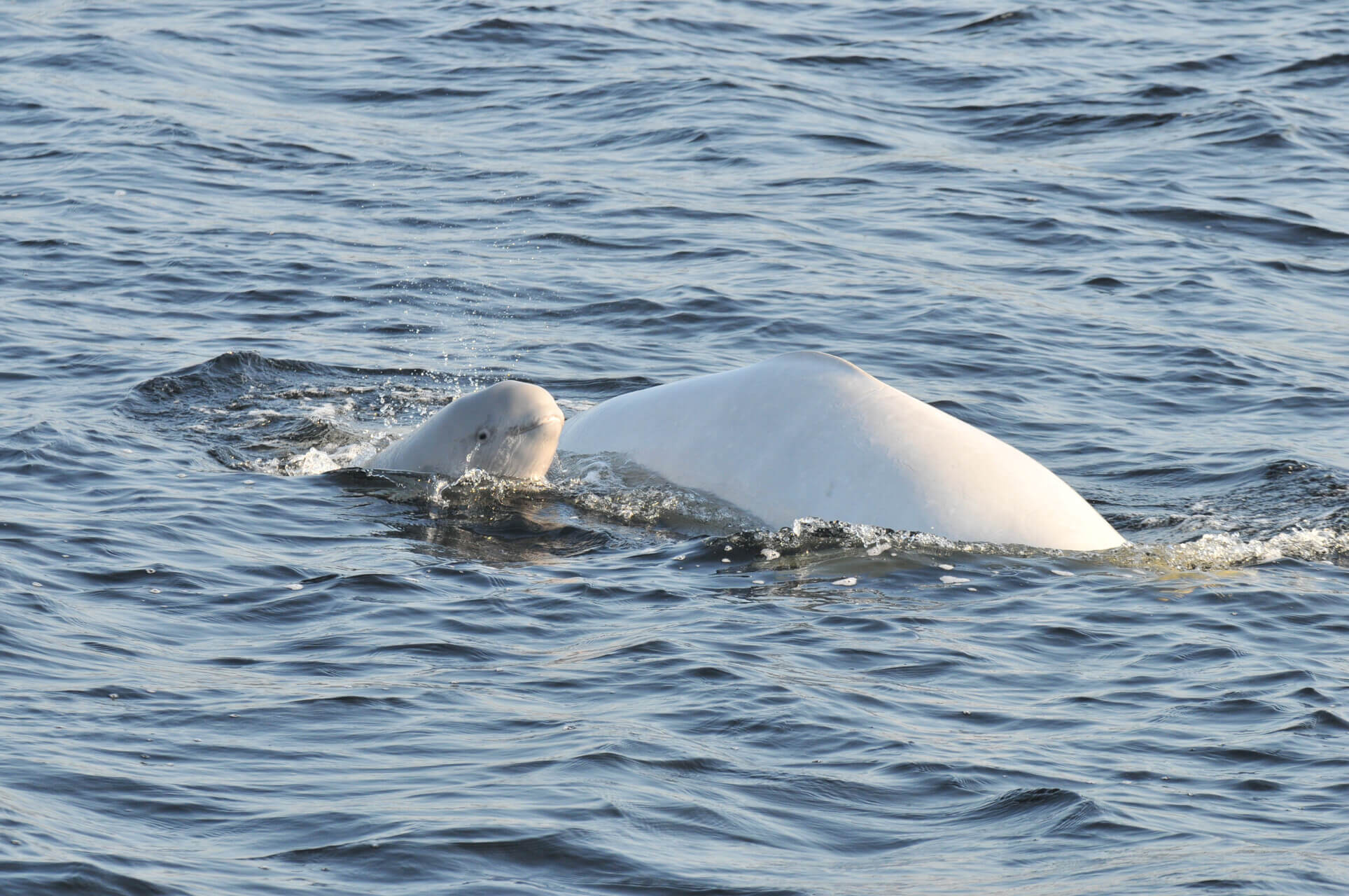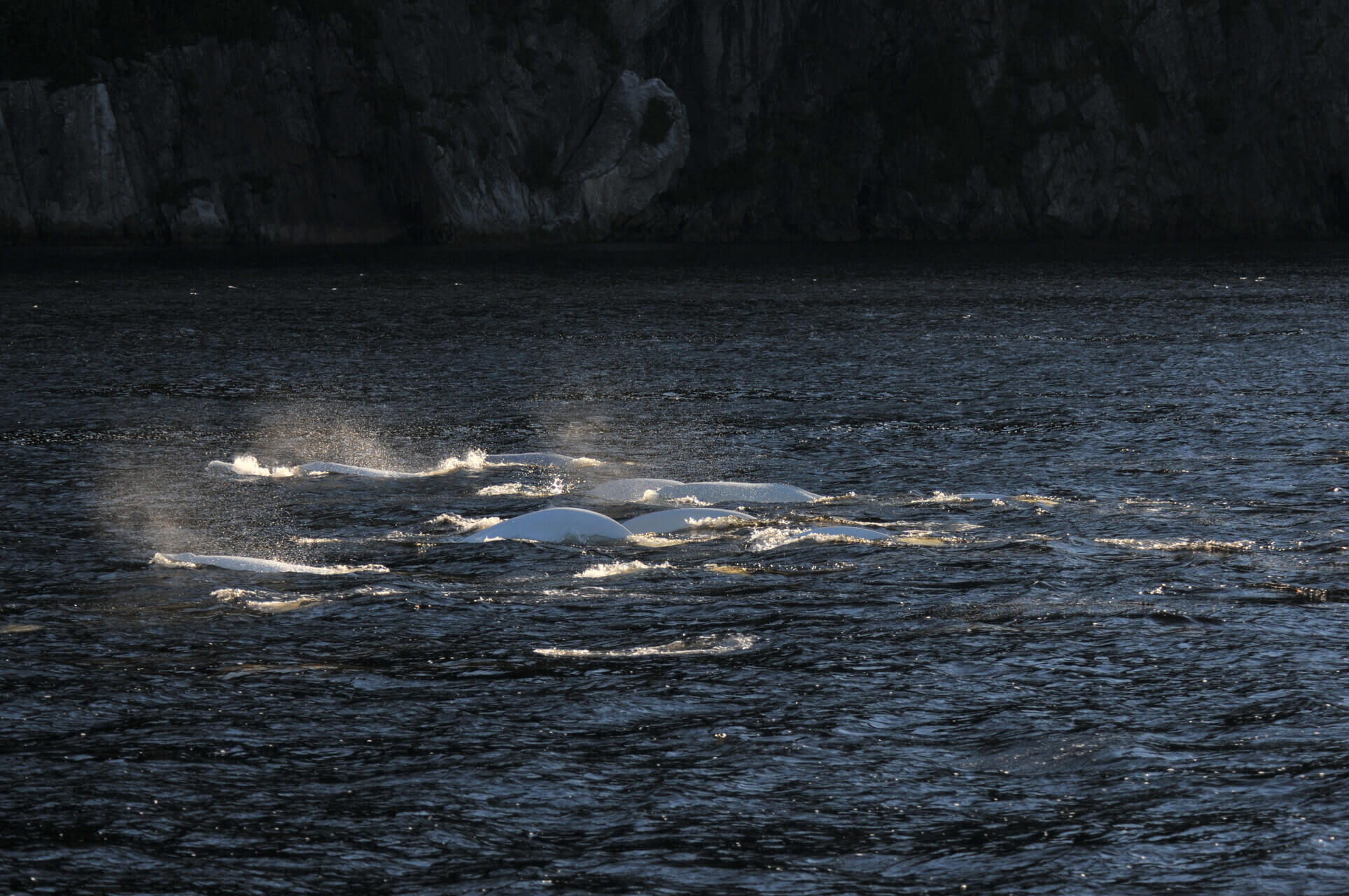How do young belugas benefit from alloparental care? This is a question that Jaclyn Aubin and her colleagues tried to answer during a research project on the St. Lawrence beluga population. Although their results did not shed any new light on these benefits, the veil was still lifted on other previously unknown aspects of the lives of belugas.
An unexpected discovery
Maternal care provided to young belugas is essential for their survival: their mother nurses them, ensures their protection, facilitates their movements and offers them opportunities to socialize. However, calves and juveniles also benefit from attention from other individuals, referred to as “allomaternal” or “alloparental” care.
To date, scientists still do not understand the exact benefits that this alloparental care gives to young belugas, and the study conducted by Jaclyn Aubin and her team did not yield any additional answers in this regard. However, their project did lead to other discoveries. Indeed, scientists noted a decrease in maternal care of calves in the presence of group socialization behaviour. Additionally, mothers provided less care to their offspring when males were nearby.
Researchers proposed explanations for these unexpected observations. When adults are socializing, calves (0 to 2 years old) are also likely to socialize and play with individuals their own age. This means less time spent with their mothers. These games are believed to offer them opportunities to sharpen their social and motor skills. As for juveniles (2 to 5 years old), they appear to seek contact with males for their socio-sexual development, once again leading to less time with their mothers. These results demonstrate the crucial role that socialization plays for young individuals in beluga communities.
Predictions fail to materialize
A number of hypotheses had been put forward regarding the benefits of alloparental care for young belugas. The team predicted an increase in such care under certain circumstances, a reflection of the roles it plays in the lives of both calves and juveniles.
Scientists had proposed that calves associate with alloparents for the same reasons they associate with their mothers: for protection and energy-related benefits. As a result, when males or boats were in the vicinity, researchers believed they would observe a greater number of associations between calves and their mothers as well as their alloparents with the aim of reducing the risk of infanticide or separation. Additionally, they expected an uptick in maternal and alloparental care during travel, including movements during a rising tide. In this regard, it is thought that adults offer energy assistance to young belugas and help them when travelling long distances.
Contrary to their expectations, the results revealed that associations between calves and their mothers or alloparents did not increase in the presence of males or boats, nor when travelling.
As for juveniles, scientists had previously believed that they associated with alloparents for socializing purposes. However, their observations did not demonstrate that they spent any more time with alloparents during periods of socialization.
A critical eye
Despite these unanticipated results, the fact that alloparental care is ubiquitous in this population suggests that it still offers a number of advantages for young animals. It is possible that certain elements in the design of the study or the life habits of belugas blurred the results. Jaclyn Aubin points out: “It’s possible that alloparental care mainly serves to give a break to the mother.” In this case, alloparental care would therefore be beneficial for offspring simply because it would ensure they receive quality care at all times by allowing the mother to benefit from periods of rest. Alloparental care is therefore not associated with any specific contexts.
An in-depth look at maternal care
Mother belugas protect their young against possible threats, which could come in the form of their male counterparts or watercraft. In some species of toothed whales, males practice infanticide, the act of killing a female’s offspring so that she becomes fertile again more quickly. Despite the fact that this practice has not been recorded in belugas, segregation between bulls and cows would suggest that there is a certain risk for the young. In the case of boats, studies have already shown that the noise they generate can hinder communication between calves and their mothers as well as group cohesion. Noise pollution increases the risk of separation between the mother and her calf, which could be fatal for the latter.
The mother will therefore assist her calf in its movements, as it has little strength and poor coordination, which can affect its mobility. To overcome this, the pair moves in the so-called “echelon” position, which benefits the offspring but is detrimental for the adult in terms of energy expenditure. This type of swimming is characterized by the young animal moving close to its mother’s side, behind her pectoral fins or under her caudal peduncle, in a hydrodynamic furrow that facilitates its movement. However, the drag force that is generated represents an additional effort for the mother.
Alloparental care inarguably provides benefits both to young belugas and their mothers. With a little luck, and a lot of expertise, future studies may allow us to discover its true nature!
Learn more
- (2020) Aubin, J. A., Michaud, R., Vander Wal, E. Protection, energetic assistance, or social perks: How do beluga offspring benefit from allocare? Marine Mammal Science 39: 77-97








